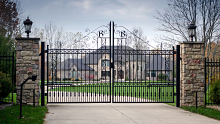
Life insurance companies have joined the battle for high net-worth (HNW) clients in the wealth-management industry, offering a growing array of segregated funds geared toward affluent investors.
The insurers are using discounts on management expense ratios (MERs) as way to attract affluent investors’ assets. And, at a time when markets are volatile and investors are jittery, the insurers have a key edge over their investment industry counterparts: the ability to offer guarantees.
“With all of the volatility in the market right now, I think seg funds are going to become more and more attractive,” says Cameron Foley, financial advisor with Hartry Foley Financial of Oakville, Ont., which operates under the umbrella of Markham, Ont.-based Worldsource Financial Management Inc. “If you can take advantage of those savings on MERs, then it just adds more value and overall protection to [clients’] portfolios.”
In December, Quebec City-based Industrial Alliance Insurance and Financial Services Inc. (IA) launched a new Prestige Series of seg funds for clients whose consolidated seg fund assets with IA have a market value of $300,000 or higher. The program provides clients with reduced MERs of 10 to 55 basis points (bps) less than the regular MERs, depending on the fund.
The Prestige Series program aims to give affluent investors an incentive to invest a greater proportion of their assets with IA rather than allocating them among multiple asset managers.
“We didn’t have anything yet for more affluent clients, so we wanted to bring an option for those clients who bring us a significant amount of money,” says Marie-Claude Poulin, director of individual savings and retirement products with IA. “We expect that clients will maybe consolidate their assets to get those rebates [to] help them grow their assets faster.”
The launch of IA’s Prestige Series follows similar initiatives by other insurers to reward their investors who hit designated minimum thresholds in seg fund holdings with lower management fees. In November, for example, Toronto-based Sun Life Financial Inc. expanded the private-client program available through its mutual fund arm, Sun Life Global Investments (Canada) Inc. (SLGI), to include seg funds.
Brackets of assets
“We launched our seg funds earlier last year and very much wanted that to be a part of our private-client program,” says Cindy Crean, managing director, private-client program, with SLGI.
That program provides SLGI clients holding at least $100,000 in eligible SLGI mutual funds and Sun Life Guaranteed Investment Funds with discounts on MERs ranging from five to 40 bps on MERs, which are applied to different brackets of assets using a progressive schedule of fees.
Toronto-based Manulife Financial Corp.‘s investment division made a similar move in late 2014, adding a seg fund option to its Manulife Private Investment Pools program, which is designed for investors with at least $150,000 in investible assets.
The insurers’ HNW seg fund programs provide clients with alternatives to similar offerings in the mutual fund industry. The insurers are striving to appeal to affluent clients who like the idea of a safety net to protect their nest egg while still growing their assets.
“Older clients who have accumulated a lot of assets and are approaching retirement have a lot of interest in seg funds because of the protection offered,” says Poulin.
Seg funds are known for having higher fees than their mutual fund counterparts and, as a result, seg funds generally have limited uptake among fee-conscious clients and advisors. During market downturns, however, there often is renewed interest in the guarantees offered in seg fund contracts.
“[Clients] may think [seg funds] are expensive and not worth it when markets are doing well,” says Poulin, “but when markets go down, clients remind themselves why they’re paying for guarantees.”
Seg funds guarantee to return a predetermined percentage of the original investment – usually, 75% or 100% – once the fund units have been held for a specific period of time or upon death of the policyholder.
Seg funds also provide estate-planning benefits, such as the ability for policyholders to designate a beneficiary in order to facilitate a smooth transfer of assets upon death. That ability appeals to clients in the HNW market, Foley says.
Savings add up
“There’s a huge generational transfer of wealth happening right now,” he says. “Not only are those older clients looking to protect and secure those assets before they’re passed down, [clients] also want to ease the transfer of those assets to their beneficiaries.”
Foley suspects that the new seg fund programs will resonate with clients who recognize the benefits of the products. Although the prospect of a five- or 10-bps reduction in fees may not be enough to prompt clients to swap their mutual funds for seg funds, the savings can add up over time, Foley says: “Those small MER differences won’t have an immediate impact. But when you start looking long term, that’s when you could see a difference in the overall fund value.”
Given the current spotlight on fees in the wealth-management industry as a result of regulatory initiatives such as the client relationship model, Foley adds, clients are likely to welcome any conversation about lower fees. “Fee reduction is the hot topic in the industry right now,” says Foley.
Insurance companies also are taking steps to ensure their seg fund programs for affluent clients appeal to advisors working with clients in that segment.
Both Sun Life and IA have introduced automatic enrolment features so that clients who reach the asset threshold necessary to qualify for HNW programs will have their fees automatically readjusted to the discounted rate.
© 2016 Investment Executive. All rights reserved.